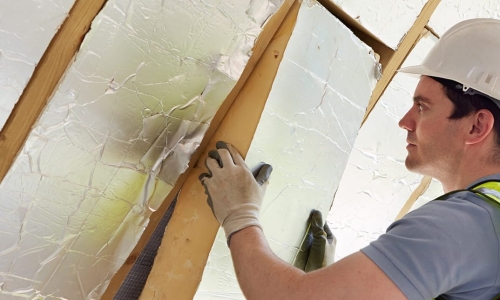Spring Cleaning: At-Home Inspection and Insulation Services

As winter says goodbye and the promise of spring lingers in the air, it’s the perfect time to not only tidy up your living space, but also pay attention to a crucial aspect that’s often overlooked—insulation. For many of us, “spring cleaning” means cleaning up the messes laying around our homes or hiding in our sheds. However, most forget one of the most important places to touch up when the spring rolls around: the spaces inside our walls.
Through even rudimentary insulation services, you may find a surprising number of benefits around your home. In today’s blog post, we’ll be discussing how to incorporate proper insulation into your spring cleaning routine, and what to expect when you do.
The Role of Insulation in Maintaining Indoor Air Quality
As you begin your spring cleaning, consider the impact of insulation on indoor air quality. Well-maintained insulation contributes to a healthier living space by preventing the infiltration of outdoor pollutants. Beyond temperature regulation, insulation serves as a protective shield, creating an environment where you and your family can breathe fresh, clean air. Regular inspections and upkeep ensure that your insulation continues to play a vital role in maintaining optimal indoor air quality.
Insulation Inspection and Maintenance Tips
Because it has a mild climate and arrives after some of the year’s harshest conditions, spring is the ideal time to assess the condition of your insulation. If you don’t already know what’s entailed in an insulation inspection—don’t worry. Conducting a rudimentary inspection is surprisingly easy, and is only 3 steps:
1. The Visual Inspection
As you might expect, performing a visual insulation inspection essentially just means taking a look at your insulation. We recommend beginning with the areas in your home that are easily accessible, such as your basement and attic. There, look closely for any signs of discoloration or mold. Make sure to bring a bright light with you, since some discoloration can blend with healthy insulation in darker rooms, but stand out under proper lighting.
2. Check Insulation Integrity
The integrity of your insulation is a factor that can be easily forgotten when performing an inspection. Even so, the integrity of your insulation is absolutely critical at preventing (or even reversing) damage. If you have fiberglass insulation, in particular, we recommend that you check to see that it’s not compressed. If you have boxes or other items stored near your fiberglass insulation, make sure they aren’t pressing against the insulation. If they do, the resulting compression will close up the air pockets in your fiberglass, which is the insulating property you should seek to preserve.
3. Search for Gaps
Finally, check for drafts or entry points where moisture and air could enter in. In these locations, especially, your insulation is at risk of wearing down or growing mold. Additionally, gaps like these could be the main culprit if you’ve noticed your energy bill rising much higher than you’re used to. Just by ensuring that these gaps receive proper insulation, you can save yourself money on energy, insulation, and even unnecessary home repairs.
When to Contact Spartan for Insulation Services
If you’ve performed an inspection of your insulation and feel that you might need additional insulation services performed, then don’t hesitate to contact our team at Spartan today. You and your family deserve a home that’s properly insulated for the years to come. When you work with Spartan Insulation, we aim to provide you with one.


